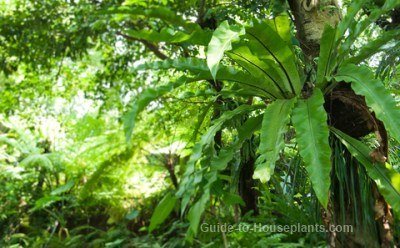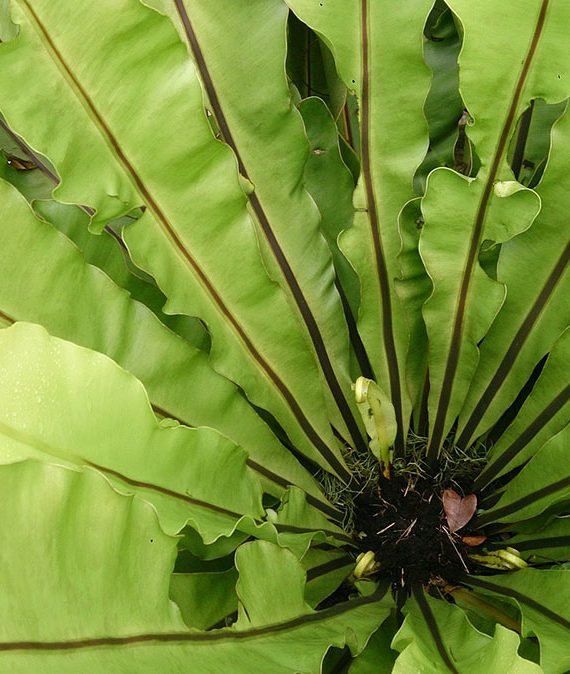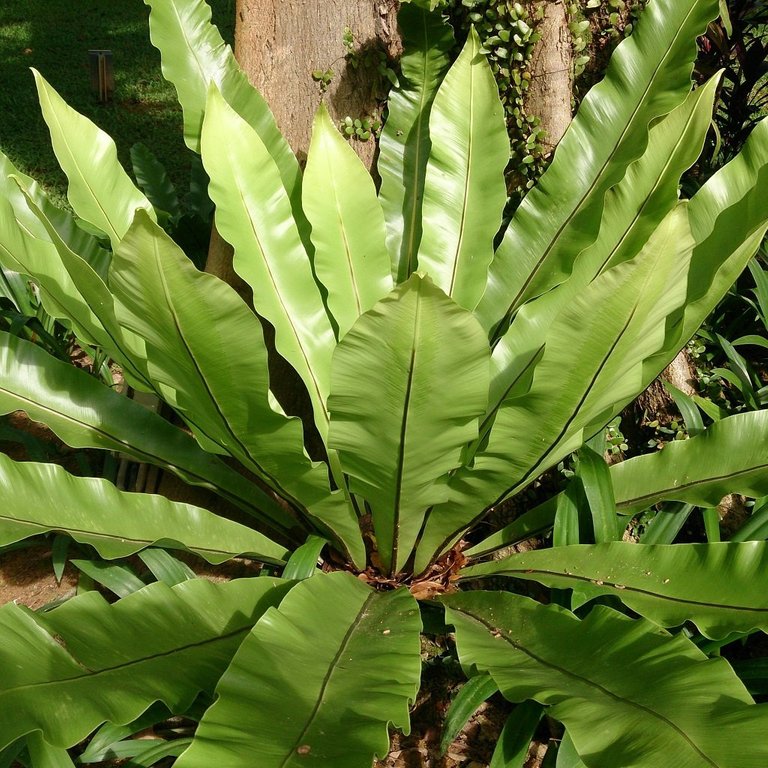Botanical Name: Asplenium nidus
Bird Nest Fern is one of the easiest types of ferns to grow. This tropical native is fast-growing and will live for many years with good care.
In its natural habitat, it grows as an epiphyte (a plant that grows on trees) in the warm, moist, tropical rain forests. Despite its tropical beginnings, it adapts well to being a house plant. Place your potted fern where it is out of direct sun and away from drafts, which can scorch the fronds. Provide humidity and you'll keep it healthy.
This unique fern grows in the form of a deep rosette of large, shiny, spear-shaped fronds. New fronds unfurl from the center of the plant. Its fronds are fragile, so I'd put this fern where passersby won't brush up against it.
As Bird Nest Fern ages, the oldest, outer fronds will turn brown. This is normal. You can cut them off at the base to keep the plant looking neat.


Those upright fronds tend to be dust-catchers. Keep the broad, shiny fronds dust-free by spraying with water and gently wiping them with a damp cloth. Never use leafshine products on ferns because it can severely damage their delicate fronds.
Repot young plants in spring, every couple years or when the roots fill the pot. If you find that the roots are attached to the pot, run a knife around the inside to loosen them before you can remove the rootball. You may need to break the pot to remove it. It's a good idea to use a container with drainage holes to avoid soggy soil. Take care not to pack down the potting mix; this fern likes a loose mixture.
This fern's problems are few. Watch for scale insects, that look like small, brown discs on fronds. If you find an invasion of these pests, spray with soapy water followed by clean water. Don't use insecticides on ferns because they are easily damaged by chemicals.
 http://www.guide-to-houseplants.com/birds-nest-fern.html
http://www.guide-to-houseplants.com/birds-nest-fern.html